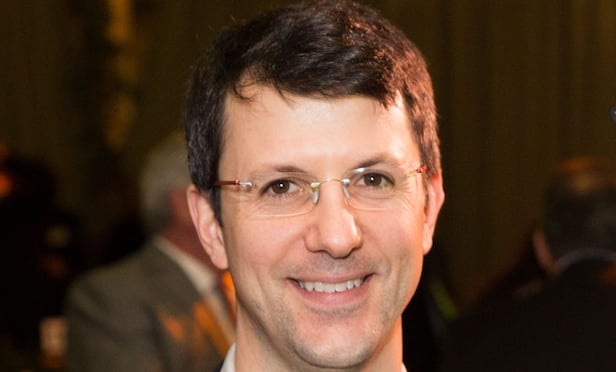 Russell Unger, executive director of Urban Green Council
Russell Unger, executive director of Urban Green Council
NEW YORK CITY—Big buildings are big contributors to global warming. They are the source of two-thirds of the city's carbon emissions, according to the Urban Green Council, the New York affiliate of the nonprofit US Green Building Council.
Acknowledging change is needed, leading real estate firms joined an Urban Green Council initiative. It resulted in recommendations for New York City's large buildings to reduce carbon emissions 20% by 2030. This would put the city on track to cutting greenhouse gas emissions 80% by 2050. Thus, the report is named the “80×50 Buildings Partnership Blueprint for Efficiency.”
More than 42 organizations in real estate, labor, energy efficiency, nonprofits and the government participated. This included Brookfield Properties, the Durst Organization, JLL, New York University, Related Companies, Rudin Management, SL Green, Vornado and the Real Estate Board of New York. They teamed up with 32BJ SEIU, Local Union No. 3 IBEW, UA Plumbers Local Union No. 1, EdisonEnergy, the Rent Stabilization Association, the Environmental Defense Fund, the Natural Resources Defense Council and other groups concerned with how buildings impact the environment.
“The partnership brought together organizations from opposite sides of the fence. But it turns out the fence wasn't as high as we thought,” says Russell Unger, executive director of Urban Green Council, which released the recommendations after eight months of discussions and meetings. “Building owners want to improve energy efficiency. Advocates do care about feasibility. We just needed to recast disagreements as questions, and the time to work through them.”
The plan looks at buildings over 25,000 square feet which amount to 57% of the city's built area. Some of report's highlights propose the following measures:
* Create a Made-in-New York City metric based on the EPA's Energy Star rating that is calibrated with New York City building data. This would help standardize measurement of energy use to accurately compare buildings regardless of construction, operations and occupancy.
* With rent-regulated buildings, owners need to pay for the energy efficiency upgrades without passing the costs of major capital improvements onto tenants with permanent rent increases. Owners of affordable housing can have thin profit margins, as do many non-profits or religious organizations. Incentives, subsidies and other forms of financing and technical support should be made available for the rent-stabilized multifamily sector.
*City-owned buildings should upgrade sooner than private properties to lead by example. City buildings over 10,000 square feet would be required to reduce energy consumption 20% by 2025. Case studies with retrofits and pilot programs using new technology should be published to help provide guidance.
*Develop an “efficiency trading program.” Similar to national and international carbon tax credits, the program would allow building owners to buy energy savings from upgrades in other buildings.
The report provides the qualifying statement that the participating entities accept the core ideas of the blueprint. However, “some of the organizations may not agree with specifics of certain recommendations.” It states that support of any new law would be determined during the legislative process.
In the next step on September 5, the Urban Green Council will hold a meeting at the 32BJ SEIU Manhattan office to discuss the challenges of turning the 80×50 proposal into law.
© Touchpoint Markets, All Rights Reserved. Request academic re-use from www.copyright.com. All other uses, submit a request to [email protected]. For more inforrmation visit Asset & Logo Licensing.







